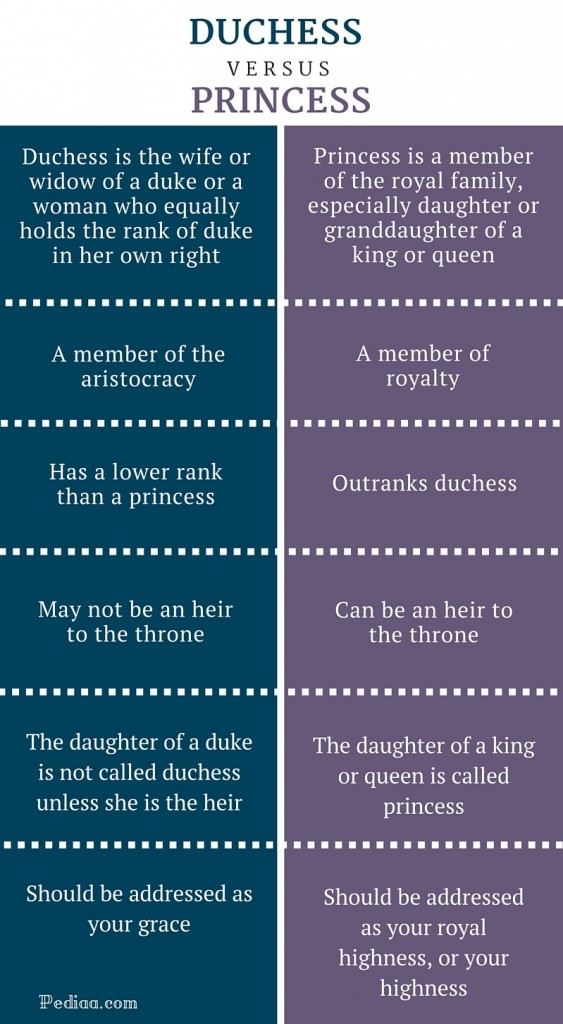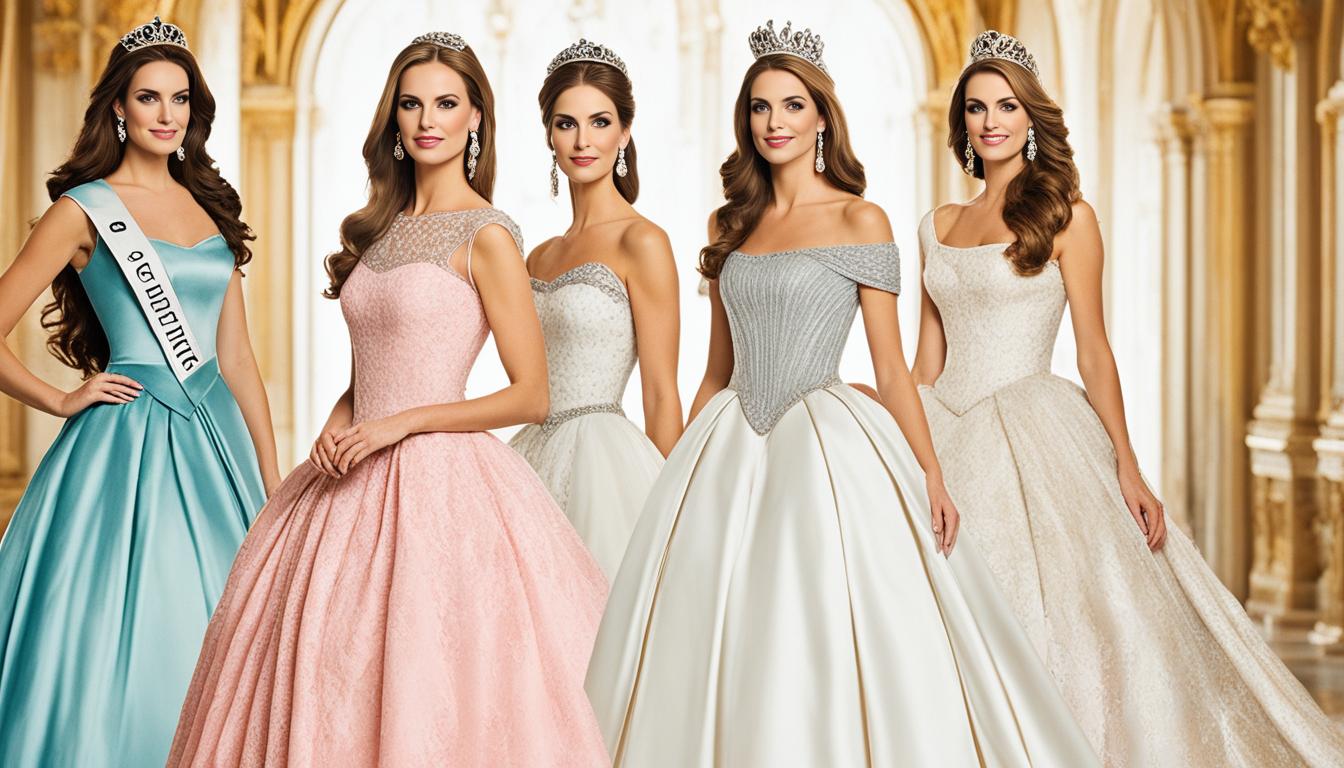Is it really all that clear cut? The hierarchy of noble titles, often steeped in centuries of tradition and varying across different cultures, can be a surprisingly complex matter, and the seemingly simple question of whether a duchess outranks a princess belies a fascinating web of historical context, lineage, and individual circumstances.
Navigating the intricate landscape of royal and aristocratic ranks requires a keen understanding of the nuances that govern these positions. While popular imagination might immediately place a princess at a higher echelon, the reality is more nuanced. To unravel this, let's delve into the specifics, examining the traditional order, the roles associated with each title, and the specific instances that shape our understanding of these regal positions. The issue of where Meghan Markle, the Duchess of Sussex, fits into this hierarchy serves as a compelling contemporary example.
Meghan Markle, despite her global recognition, occupies the title of Duchess of Sussex. This places her within a well-defined structure of nobility. But how does this compare to the title of princess, a term often associated with inherent royalty? The answer lies in understanding the source and bestowal of these titles.
| Category | Information |
|---|---|
| Full Name | Rachel Meghan Markle |
| Title | Duchess of Sussex |
| Born | August 4, 1981 (age 42 years)Los Angeles, California, U.S. |
| Spouse | Prince Harry, Duke of Sussex (m. 2018) |
| Children | Archie Mountbatten-Windsor, Lilibet Mountbatten-Windsor |
| Education | Northwestern University (BA) |
| Occupation | Actress, Philanthropist |
| Known for | Suits, Royal Family Membership |
| Official Website | sussex.com |
In the established order of noble titles, a duchess, the female counterpart to a duke, traditionally ranks below a prince or princess. The title of duke, and consequently duchess, often denotes a hereditary position, frequently associated with the control or ownership of a specific territory or duchy. Historically, a duke was a powerful figure, sometimes even a sovereign ruler. The title of Duchess is one of the most esteemed honors granted within a nobility system. More often than not, this title is bestowed upon the wife of a Duke, but has also been given by the Monarch, or even the Pope.
However, the system isn't always as simple as a straight-line hierarchy. The source of the title plays a crucial role. A princess by birth, meaning one born into the royal family, typically holds a higher position than a duchess who attains her title through marriage. This is the crux of why, for instance, Duchess Kate (Catherine, Duchess of Cambridge) and Duchess Meghan must curtsy to Princess Beatrice and Princess Eugenie, who are princesses by blood. The two duchesses are royal through marriage, but Princess Beatrice and Princess Eugenie were born into royalty. Lineage carries significant weight.
Consider Lady Diana Spencer, upon marrying Prince Charles in 1981, she received the titles HRH The Princess of Wales, HRH The Duchess of Cornwall, and HRH The Duchess of Rothesay. She was not a princess by birth, but she had that title upon marrying Prince Charles. Lady Diana had several noble titles, but her situation highlights that the acquisition of titles can be complicated.
- Jasmine Pinedas Baby Gino Drama 90 Day Fianc Stars Life
- Pat Sajaks Wife Inside His Marriage To Lesly Brown More
To further illustrate the point, consider the specific example of the British royal family. The traditional order, moving downwards, is Emperor/Empress, King/Queen, Grand Duke/Grand Duchess, Prince/Princess, Duke/Duchess, Marquess/Marchioness, Earl/Countess, Viscount/Viscountess, and Baron/Baroness. This order provides a general framework. But the day-to-day interactions and protocol depend heavily on who was born into the family and who married into the family.
The British monarchy's structure dictates that royal titles, such as king, queen, prince, and princess, outrank the duchess. The female equivalent of the title of Duke is Duchess. However, its important to look at the entire context when assessing titles, and in some cases, such as with sovereign rulers of small countries in Europe known as Duchy, the word duke most commonly refers to the sovereign ruler. In fact, in the British monarchy, duke is the highest hereditary title outside of prince, princess, king, or queen.
The concept of 'higher' also takes on a different dimension when considering political power. An empress, the female ruler of an empire, holds considerably more sway than a queen, who governs a kingdom. While a queen reigns over a specific nation, an empress's dominion extends over a vast, multi-ethnic territory, granting her a broader scope of authority. The historical context of emperors and empires is an important point to note.
Delving deeper into the intricacies, titles like Grand Duke and Archduke further complicate the picture. A Grand Duke theoretically outranks a Duke, and an Archduke similarly holds a higher position. Historically, this is exemplified by Austria's elevation from a Duchy to an Archduchy in 1453 and Luxembourg's promotion from a Duchy to a Grand Duchy at the Congress of Vienna. While both are higher than a regular duke, an archduchess is higher in rank than a grand duchess. Grand Duke/Duchess titles aren't as widely used today, except for the royal family of Luxembourg. The Habsburgs were the most well-known to have the title of Archduke.
Duchess Kate, like Meghan Markle, became a duchess through marriage and is therefore ineligible to earn the title of princess. But Princess Charlotte Elizabeth Diana, daughter of Prince William and Duchess Kate, has a birth right to be a princess. These examples highlight the importance of blood relation to be bestowed the title of Princess.
To provide further clarity, lets look at an example of the sisters of the sovereign, for example Anne, the Princess Royal, wives of uncles of the sovereign (none at present), aunts of the sovereign (none at present), wives of nephews of the sovereign (none at present), nieces of the sovereign Princess Beatrice, Mrs. Edoardo Mapelli Mozzi.
Although titles are important, there are some traditional forms of address that are equally important to follow when interacting with those of nobility. Duchesses should be addressed as "Your Grace," while countesses should be addressed as "Lady." Although the term "lord" is often referred to as a general reference for British nobility, an Earl is higher than a Lord. The Countess is the third rank in peerage.
In conclusion, while a princess might generally be perceived as holding a higher rank than a duchess, the reality is contingent upon various factors. Lineage, method of title acquisition (birthright versus marriage), and the specific regulations of the royal family or aristocratic system in question all contribute to determining the precise hierarchy. It is a complex, fascinating system, and understanding its nuances requires careful consideration of the historical and individual contexts.
- Henry Olyphant From Timothys Son To His Own Spotlight
- Claim To Fame Season 2 Everything You Need To Know Where To Watch


